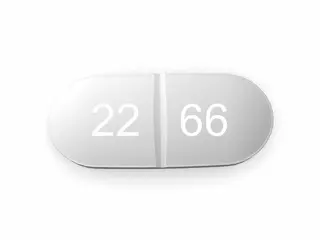Muscle Relaxant
Effective muscle relaxants to relieve tension, reduce spasms, and improve mobility. Shop trusted brands for fast, targeted relief and enhanced comfort. Fast shipping and discreet packaging.
Muscle relaxants are medications designed to relieve muscle spasms, stiffness, and pain. They work by acting on the central nervous system or directly on the muscles. These drugs are commonly prescribed for conditions such as muscle injuries, spasticity, multiple sclerosis, and back pain. Among muscle relaxants, Baclofen, Robaxin, and Zanaflex are some of the most widely used medicines.
Baclofen is a popular muscle relaxant used primarily to treat spasticity caused by multiple sclerosis or spinal cord injuries. It works by targeting the spinal cord and reducing nerve signals that cause muscle stiffness. Baclofen is available in tablet and liquid forms. It is effective in reducing muscle tightness but may cause side effects such as drowsiness, dizziness, and weakness. Patients often notice improvement within a few days of starting the medication. Baclofen should be taken exactly as prescribed, and sudden discontinuation is not recommended due to withdrawal symptoms.
Robaxin (generic name Methocarbamol) is another well-known muscle relaxant. It is often used to relieve muscle spasms resulting from injuries like strains or sprains. Robaxin works by depressing the central nervous system, which helps relax the muscles. It is typically prescribed for short-term use and can be combined with rest and physical therapy. Robaxin may cause side effects including dizziness, sedation, and nausea. It is considered safe for most adults but should be used cautiously in people with liver problems.
Zanaflex (generic name Tizanidine) is a muscle relaxant that acts as a short-acting alpha-2 adrenergic agonist. It is effective in treating spasticity related to conditions like multiple sclerosis or spinal cord injury. Zanaflex works by blocking nerve impulses and reducing muscle tone. It comes in tablet or capsule form and is usually taken multiple times a day. Common side effects include dry mouth, drowsiness, and low blood pressure. Patients need to monitor their blood pressure regularly while on Zanaflex. It is important to avoid alcohol to prevent increased sedation.
All three medications require careful dosing and monitoring. Muscle relaxants can cause drowsiness and affect coordination. Patients should avoid driving or operating heavy machinery until they understand how the drug affects them. Doctors usually start treatment with the lowest dose and adjust as needed. Muscle relaxants are often part of a broader treatment plan that includes physical therapy, exercise, and pain management strategies.
Choosing the right muscle relaxant depends on the patient's condition, other medical issues, and potential drug interactions. Baclofen is often favored for chronic spasticity due to neurological conditions. Robaxin fits well for acute muscle injuries and spasms. Zanaflex is preferred for its shorter duration and quick effect but requires close monitoring. Discussing symptoms and medical history with a healthcare provider is essential before starting any muscle relaxant.
Patients should never discontinue muscle relaxants abruptly without consulting their doctor. Doing so can result in a rebound increase in muscle spasticity or withdrawal symptoms. Long-term use of muscle relaxants may lead to tolerance or dependence in some cases. Regular follow-up appointments help assess effectiveness and side effects.
Muscle relaxants are effective tools in managing muscle spasms and improving quality of life. When used correctly under medical supervision, Baclofen, Robaxin, and Zanaflex can provide significant relief. Always report any unusual symptoms or side effects to a healthcare provider promptly. Proper use and adherence to prescribed guidelines ensure safe and efficient treatment outcomes.


